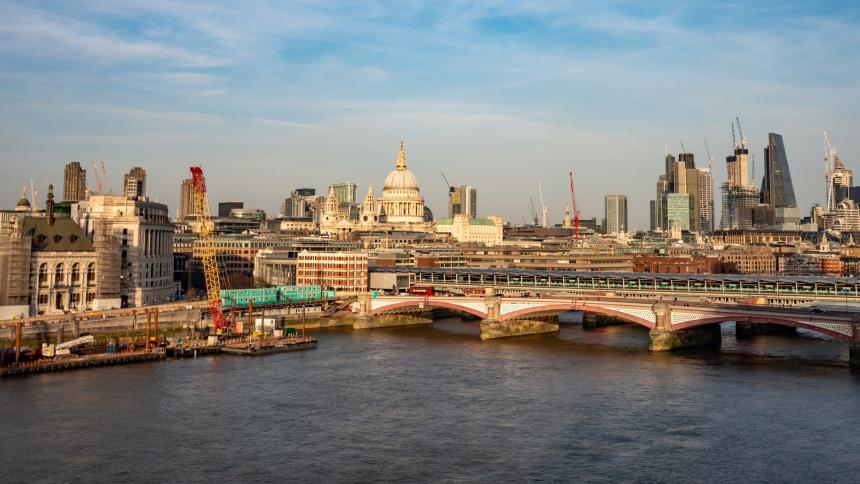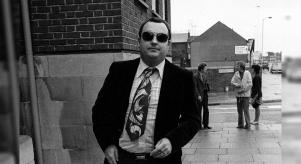


The Liverpool gang murder of Rhys Jones
It doesn’t matter where you are on Earth - Lagos, Lahore, Los Angeles or Liverpool - 11-year-old children shouldn’t be killed in gun violence.
Gun deaths are, thankfully, a rare occurrence in Britain. There are 66 million people in the UK, with each year seeing around 60 firearms-related deaths.
The majority of those killed by guns here are people involved in organised crime. Some who are shot dead are killed because the police consider them armed and dangerous. Then there are accidental discharges and spousal/domestic violence murders.
So when gunfire rings out on a Liverpool housing estate and an 11-year-old kid is mortally wounded, it’s going to make headlines. As proven in August of 2007.
What happened to Rhys Jones?
Like almost all the boys living on the Croxteth Park estate, Rhys Jones lived for football. A dedicated Toffee, Rhys loved his local side Everton. So much so that almost all of the photographs later released to the public had him in one of the club’s famous royal blue shirts. In the early evening of the 22nd of August 2007, Rhys went to football training. On the short walk home, he was shot and killed.
The journey home had him cut through the car park of the Fir Tree pub. As he did so, he saw another youth, a lad five years older than him that belonged to a feared local street gang. The older boy was on a bike and was holding a gun. Before young Rhys could react, three shots were fired. One bullet entered Rhys’ neck and he fell to the ground.
Despite the best efforts of paramedics, the young boy died from his injuries. He was pronounced dead at the city’s famous Alder Hey hospital shortly after.
Who murdered Rhys Jones? And why…?
Sean Mercer killed Rhys. Just 16 years of age at the time, Mercer may well have been a juvenile at the time of the killing, but he was - by that point - a renowned face on the street. A member of the ‘Croxteth Crew’, he had gone to the Fir Tree with murder on his mind. The trouble was - it wasn’t young Rhys he meant to shoot.
There was another intended victim that day: Wayne Brady, a member of a rival group. In a terrible twist of fate, Rhys merely found himself walking into the line of fire from Sean Mercer's century-old Smith and Wesson .455 revolver.
Rhys was not only the victim of murder, the kid was also a cruel victim of circumstance. And yet another victim of the worsening gang wars that were playing out on the streets of Merseyside.
The street gang wars of the Liverpool suburbs
The postcode L11 is notorious in the north-west of England. Liverpool is one of Britain’s biggest, most historic, vibrant and characterful cities. Like any large city, it has its areas of poverty, deprivation and crime. In Liverpool’s case, perhaps the most infamous area falls under that L11 postcode... The areas and twin housing estates of Croxteth Park and Norris Green.
The shooting of Rhys Jones was not the culmination of bubbling rival gang tensions. Violence, shootings and revenge killings had been a feature of the area for some years.
Almost exactly a year before Rhys’ murder, Liam Smith, a member of the Norris Green Strand Crew, was shot dead by a member of the Croxteth Crew as he left prison. The police investigation into the Rhys Jones case found a link. The ‘true’ target of Mercer’s World War One pistol, Wayne Brady, was the Strand gang.
The turf war between the two gangs has deep roots in Liverpool’s history. Gangs of youths have fought each other since as far back as the mid-1800s. The city’s geography made it a prime location and shipping routes makes it perfect for drug importation and distribution too. A factor which can’t be ignored. The trickle-down effect of such crimes is very real indeed.
Why kids get swept up in the violence
When you hear about ‘gang violence’, it’s tempting to think of warring factions of the Mafia or competing south or central American drug cartels. Men of age settling disputes over turf, money or honour with ruthlessly efficient hits or devastatingly bloodthirsty attacks on rivals. But in the context of British crime, we need to think again.
Rhys Jones was a child. He hadn’t even started secondary school when he was killed. His death was shocking. But while the 11-year-old was not Mercer’s intended target, the shooting was not the act of a grown man. A younger child was caught up in the violence here, but had Rhys taken a different route home that night, a 16-year-old may very well have still shot another young adult. Kids are at the very heart of the problem.
Sean Mercer was convicted of murder for his crime. A further sixteen others - mostly teenagers - were also arrested for ‘assisting an offender’. The gang closed ranks and attempted to cover up what had happened. To no avail.
How Rhys Jones’ murder devastated an entire community
Murders can rock any local community, especially a tight-knit one. Even areas that are no strangers to violence can find themselves in turmoil when a shocking killing like Rhys Jones’ occurs. And so it went with Croxteth.
The community collectively experienced the five stages of grief: denial, anger, bargaining, depression and finally acceptance. Many found solace in helping to promote a local radio station’s powerful anti-gun campaign, ‘In Rhys's Name Get Guns Off Our Streets’. Most other residents have found comfort from the fact that gun crimes have eased in the area.
No one from the area can quite put their finger on exactly why the gang wars have slackened off and fewer bullets tear through the air in L11 some 13 years on from 11-year-old Rhys Jones’ tragic murder. Especially given the fact that gun crime in the wider city has actually increased. Investment in the Croxteth area has helped. Various schemes and initiatives have also improved in the area. There may be another reason, though… Rhys’ accidental killing may well have shown guns up for what they are. Whether that be by striking an emotional chord with young gang members or via a more practical route (guns = murders, murders = hefty prison time), there is an argument to be made that the murder of Rhys Jones may well have saved the lives of other young men and boys.
Sometimes good can come from bad. If that’s the case here, at least Rhys’ family and the wider community have that scant, but perhaps quite important, consolation.




